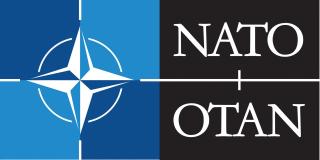By James Foggo & Mel McNulty
 The North Atlantic Treaty Organization turns 70 this year. This makes it the longest military alliance in history. It also is the largest—currently comprising 29 allies, with a 30th ready to join—and the most powerful. Its contribution to maintaining peace and security throughout its 70 years is a cause for celebration, but it will be a celebration underpinned by reflection, as allied foreign ministers gather this month to discuss how effectively the alliance is responding to the challenges of today.
The North Atlantic Treaty Organization turns 70 this year. This makes it the longest military alliance in history. It also is the largest—currently comprising 29 allies, with a 30th ready to join—and the most powerful. Its contribution to maintaining peace and security throughout its 70 years is a cause for celebration, but it will be a celebration underpinned by reflection, as allied foreign ministers gather this month to discuss how effectively the alliance is responding to the challenges of today.
NATO does well what it was designed to do. Faced with a resurgent, militarily assertive, and politically unapologetic Russia, NATO has again built up its collective defense. It has deployed additional forces and equipment in a defensive line from the Baltic Sea to the Black Sea. Five years after Russia’s illegal annexation of Crimea and its proxy war in the Donbas, NATO has reassured its eastern allies that the collective defense guarantee enshrined in Article 5 of its charter—an armed attack on one will be considered an attack on all—applies universally, regardless of geography or date of joining. Today’s challenges, however, are not confined to the east. Many allies are more concerned by the insecurity to their south.
When the NATO heads of state and government met at the Wales Summit in 2014, they described an arc of insecurity and instability along NATO’s periphery and beyond. They noted a range of security challenges and threats from state and nonstate actors; from foreign military forces; and from terrorist, cyber, or hybrid attacks—originating from both the east and the south, with no respect for geographical limits or borders.
NATO is not new to responding to threats beyond its European borders. The first and only time it invoked Article 5 was following the 11 September 2001 attacks—attacks that encapsulated the elements that have challenged conventional defense doctrine ever since: unknown assailants weaponizing everyday objects to attack civilians at a time and place of the attackers’ choosing that frequently is impossible to anticipate, detect, or prevent.
But NATO adapted. Today, it has a nearly two-decade record of out-of-area operations. None was without controversy, but the alliance learned much: about deployment to hostile environments; about operating jointly as allies and with partners; and about transparency and accountability.
There is more to learn, however. Terrorism on our streets has raised public anxiety to levels previously unseen in peacetime. Our populations also have been unsettled—and manipulated—by fears of mass migration, which feed a perception of uncontrolled borders. We have seen the impact of these fears on a political consensus that had long assumed a trend in Europe toward ever-closer union and ever-fewer borders.
We must understand better, anticipate better, and consult more widely with others who are confronting the same challenges. To that end, in 2017 NATO defense ministers mandated creation of a new center to promote engagement and information sharing with Middle Eastern and North African partners: the NATO Hub for the South.
A Hub for the South
The hub initiative immediately was confronted by the perceptions and expectations that have beset NATO since its purpose evolved post–Cold War. To some, a NATO Hub for the South, based at its largest military headquarters in the Mediterranean in Naples, could only be a launchpad for more Libya-style interventions. For others, the new facility would be a blank canvas on which to project current security preoccupations: it would be a counterterrorism hub, or a countermigration hub, or a border management hub, or all three.
In fact, the hub was born of a recognition that NATO was not configured to meet the challenges of its southern neighborhood alone. It could do so only if it connected, consulted, and coordinated with others and built on one of its greatest achievements of the post–Cold War era: partnership.
NATO is a defensive alliance, but it actually accommodates more partners than allies. Driven initially by an embrace of former Soviet and Warsaw Pact adversaries in the Partnership for Peace, NATO’s partnerships have expanded to include seven Middle Eastern and North African partners; four Gulf partners; individual partners from Iraq to New Zealand; and other multilateral organizations such as the United Nations, the Organization for Security and Cooperation in Europe, and the European Union. NATO in 2016 signed a groundbreaking joint declaration with the European Union specifying areas for organizational cooperation, notably on challenges from the south. In addition, for more than a decade it has supported the African Union, with which it will continue to develop dialogue and the potential for closer cooperation.
NATO now has some 41 partners, who have represented up to half of the nations contributing troops to NATO operations and who bring perspectives the alliance otherwise would not have. Three currently are candidates for membership; the others commit to partnerships because of the expertise, standards, and capabilities NATO shares through cooperation and political dialogue.
All of NATO’s partners are facing new threats and challenges, and they are seeking to enhance cooperation with NATO as a result. It is through responsiveness to its partners that NATO can best demonstrate its adaptation to challenges from its south.
Adaptable by Design
Adaptation should be a continuous process in response to changing security challenges, rather than the pursuit of an end-state that could be outdated moments after it is achieved. Indeed, while Russia may be deterred to NATO’s east, where it is keeping its Ukraine campaign on slow burn, it is shifting its attention south, where it believes it can have greater effect—shoring up its client in Syria, backing one party in Libya, exploiting vulnerabilities and filling spaces vacated by what it sees as a hesitant, vacillating West.
So continuous adaptation starts with an understanding that unlike in the east, where the challenges come from states, challenges to NATO’s south stem from the vulnerability of the region’s states and of the regional organizations in which they are grouped. Anticipating, preventing, and countering state vulnerability or failure is where NATO has strengths and experience developed over two decades of partnerships.

Alamy (Ulrich Doering)
Just as former Warsaw Pact states, now allies, benefited from NATO guidance on their lengthy processes of defense modernization, so too are NATO’s partners in North Africa and the Middle East benefiting from practical assistance with the skills and capacities that will help them address the range of security issues they face. It is in this little seen and largely unreported domain that NATO and its allies can add most value and respond most effectively.
The hub concept builds on this and, notwithstanding the success of partnerships, aims to embrace a wider range of cooperation to better share, understand, and recommend responses that might help address the challenges from the south at their source.
A New Way of Working
NATO’s Hub for the South is an innovation, a new way of working. It is intended to link NATO, its allies, its partners, experts from the region, and the wider international community to maximize understanding and minimize duplication. It is not, as some might suspect, another actor pushing onto an already overcrowded stage.
As an alliance dependent on consensus decision-making, NATO understands the need for deconfliction of efforts. The hub therefore is designed to work alongside others without detracting from the lead performer in any given theater. With allies, partners, and partner organizations, it will consider the conditions conducive to state vulnerability and to the spread of terrorism—the drivers and sustainers of insecurity and conflict. It will adopt a broad, inclusive approach to the consideration of root causes, not just looking at hard security, but also seeking expertise on nontraditional areas for NATO such as the economic, environmental, and human factors driving instability.
There is no cost to join, no charter to sign, just a requirement to share an interest in the security and stability of Europe’s southern neighborhood in a modernized, innovative cooperation framework. This is a new face of NATO, and we will need to work to change perceptions. Not everyone will be willing to share, but for those who are, NATO’s Hub for the South can offer a virtual and physical docking station through which to demonstrate that the whole of our efforts, on issues of paramount concern for our own populations and those of our southern partners, can be greater than the sum of their parts.
No comments:
Post a Comment